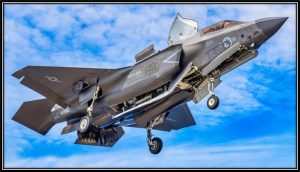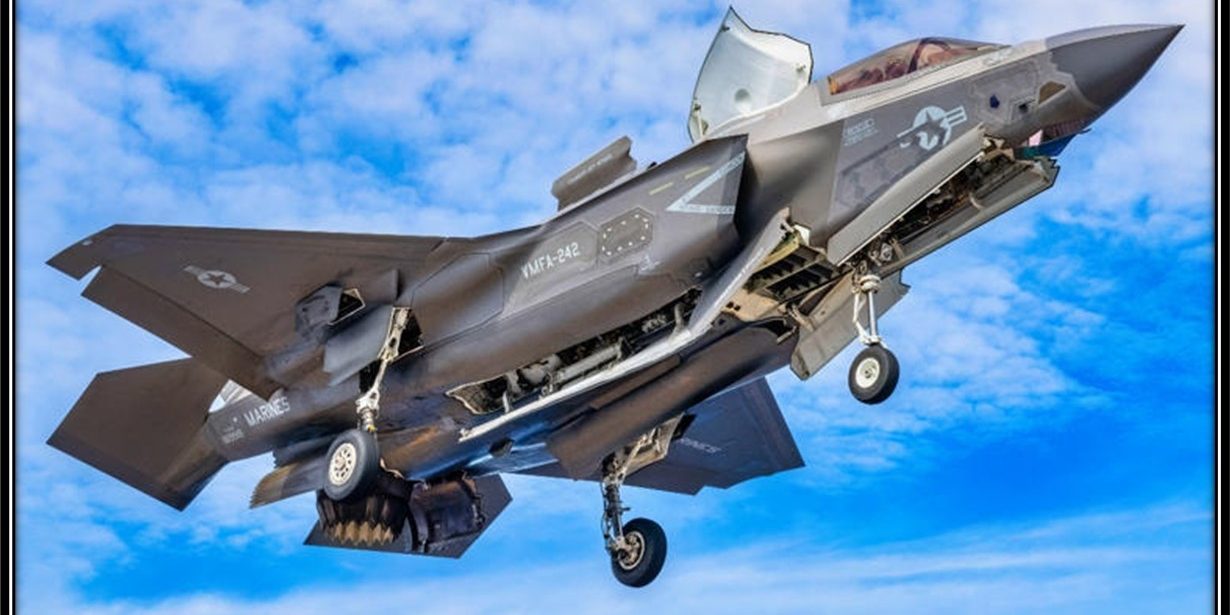This Day in Aviation History: The F-35
Contributor: Barry Fetzer
Sources: MSN.com, US Navy

A British F-35 Just Did Something That’s Never Been Done Before© 250520-N-TW227-1112 EAST CHINA SEA (May 20, 2025) An F-35B Lightning II fighter aircraft from Marine Fighter Attack Squadron (VMFA) 242, prepares to land on the flight deck of the forward-deployed amphibious assault ship USS America (LHA 6) while conducting flight operations in the East China Sea, May 20. America, lead ship of the America Amphibious Ready Group, is operating in the U.S. 7th Fleet area of operations. U.S. 7th Fleet is the U.S. Navy’s largest forward-deployed numbered fleet, and routinely interacts and operates with allies and partners in preserving a free and open Indo-Pacific region.
(U.S. Navy photo by Mass Communication Specialist 3rd Class Kenneth Melseth)
Downloaded on August 13, 2025 from: https://www.msn.com/en-us/news/world/a-british-f-35-just-did-something-that-s-never-been-done-before/ar-AA1KpjC6
“PUBLISHED on August 12, 2025, 7:45 PM EDT – Key Points and Summary – In a significant display of allied sea power, a British F-35B stealth fighter has landed on the Japanese carrier JS Kaga for the first time.
-The historic event took place during “Operation Highmast,” a nine-day multinational exercise in the Philippine Sea involving four aircraft carriers from the U.S., UK, and Japan.
-This major interoperability drill, conducted amid rising tensions with China, demonstrates the growing military cooperation between NATO and Indo-Pacific partners.
-It also marks a critical step for Japan as it brings its newly acquired F-35B fleet and upgraded light aircraft carriers into operational readiness.”
British F-35B Lands on Japanese Carrier for First Time in Historic Exercise
“A British F-35B has landed on a Japanese aircraft carrier for the first time, marking a new level of interoperability between the British Royal Navy and the Japan Maritime Self-Defense Force (JMSDF) amid mounting tensions with China.
“The historic landing took place aboard JS Kaga during a nine-day multinational exercise in the northern Philippine Sea, part of Operation Highmast – the United Kingdom’s 2025 global carrier strike group deployment, led by HMS Prince of Wales and involving multinational naval and air forces in a series of exercises stretching from the Mediterranean to the Indo-Pacific.
“The drills brought together four carrier strike groups: Kaga, HMS Prince of Wales, USS George Washington, and USS America – alongside warships from Norway, Spain, and Australia.
“While Kaga, Prince of Wales, and America all operated the short-takeoff, vertical-landing F-35B, USS George Washington brought the carrier-based F-35C, giving the exercise the full range of the stealth fighter’s naval variants.
“Training included anti-submarine warfare, coordinated air defense, and at-sea ship resupplying and refueling, ensuring allied forces are prepared to work closely together and share resources in the event of a combat deployment.
“Japan only received its first F-35Bs earlier this month, the first of a planned fleet of 42 to be deployed from Kaga and its sister ship, Izumo.
“Both are undergoing major upgrades from helicopter destroyers to fully capable light aircraft carriers. Until Japan develops more of its own carrier aviation expertise and experience, however, these joint operations with allies like the U.S. and U.K. are necessary for building skills and ensuring readiness.
“The exercise also featured U.S. Marine Corps F-35Bs and MV-22 Ospreys operating from allied ships, while Royal Air Force and Royal Navy pilots trained alongside Japanese aviators in strike missions and air combat maneuvers.
“Following the drills, HMS Prince of Wales and escorts HMS Dauntless and HNoMS Roald Amundsen, arrived at Yokosuka Naval Base for a three-week visit, hosting defense and industry events ahead of a Tokyo port call.”
The Aircraft and Why They Matter
“The F-35B, used by the U.K., U.S. Marine Corps, Italy, and now Japan, is a short-takeoff, vertical-landing variant designed for carriers without catapult launch technology or arrestor wires. The design makes it ideal for operating from smaller ships, offering greater flexibility in the Pacific, where Chinese long-range missiles could pose a threat to military bases.
“The U.S. Navy’s F-35C, meanwhile, is built for catapult-equipped carriers like USS George Washington, features larger wings, and has a longer range.
“The first-ever British F-35B flight from a Japanese carrier proved that British, American, and Japanese crews are capable of integrating and operating smoothly during demanding operations – a skill that could prove vital as Japan begins to respond to China’s expanding military presence.”
About the Author:
Jack Buckby is a British author, counter-extremism researcher, and journalist based in New York. Reporting on the U.K., Europe, and the U.S., he works to analyze and understand left-wing and right-wing radicalization, and reports on Western governments’ approaches to the pressing issues of today. His books and research papers explore these themes and propose pragmatic solutions to our increasingly polarized society.
Onward and upward!
Sources: MSN.com, US Navy







